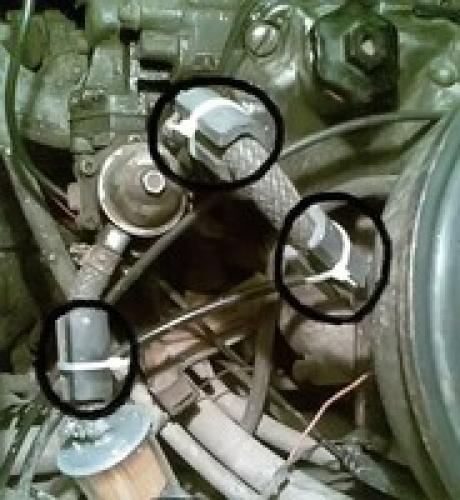How To Build A Magneto Magnetizer Pdf Writer
Magnetisers We use two different types of magnetiser for charging the magnets of rotating-coil magnetos: an internal magnetiser and an external one. The internal magnetiser can be used for most jobs, and we prefer it because it is so efficient, effective and quick and easy to use. The internal magnetiser is based on a design by Allan Hurst which was published many years ago in the Velocette Owners' Club's Fishtail magazine. Our version of it has a cylindrical core containing an iron cross-piece around which several hundred turns of lacquered copper wire are wound. The cross-piece and winding are encapsulated in car body-filler between two aluminium end pieces. Download Lexmark Productivity Studio X2650 Ink here. The ends of the winding are connected to terminals mounted on one of the end pieces.


In use, the core is inserted into the magneto body so that the iron cross-piece extends between the magnetic pole pieces inside the magneto body. We have two cores of different diameters (just under 2' and just under 2-11/64') which fit very snugly into the majority of magneto bodies. The core is plugged into a mains-powered box containing a large capacitor, a rectifier circuit, a voltmeter, a push-button switch and some ancillary bits and pieces.
Jul 10, 2013 Magnetizer plans. I was looking in to building a mag magnetizer and has anyone had luck building one that works and. Its available as a PDF. Magnetizer plans. I was looking in to building a mag magnetizer and has anyone had luck building one that works and. Its available as a PDF for your PC or other.
When the button is pressed, the capacitor is charged from the mains through the rectifier to a voltage shown on the voltmeter which levels out at just under 340 V. When the button is subsequently released, the capacitor is discharged through the core winding. That causes a very strong magnetic field to flow in a loop through the core's cross-piece, one of the magneto's pole pieces, the magneto's magnet, the other pole piece and back to the cross-piece. The magnetic field is a pulse of very short duration while the capacitor discharges. When 'topping-up' a magnet only one pulse is required. If charging a magnet that is completely demagnetised, or when flipping the polarity of a magnet, we usually use two or three pulses. Lucas K2FC If a magneto's magnet is driven fully into saturation so that it achieves its full strength, its strength will drop, soon after it is put to use in the magneto, to a maximum operating level. Rpg Maker Vx Ace Crack English.
Most Lucas magnetos are designed so that if the magnet does not have some sort of keeper (such as the magneto armature), its magnet strength does not fall significantly below the maximum operating level. So, for these Lucas magnetos, after we have charged the magnet, we can simply remove the magneto body from the internal magnetiser's core, and then fit the magneto's armature.
BTH KC1 With BTH magnetos, on the other hand, to prevent a significant drop in the magnetic operating level below the maximum, the magneto does require some sort of keeper to be in place all the time between charging the magnet and getting the armature back inside the magneto. Conveniently, the magnetic pole pieces of BTH magnetos are directly accessible from the outside. Therefore, for BTH magnetos, we fit an external keeper to the magneto while we are removing the internal magnetiser's core and replacing it with the magneto's armature. The external keeper is conveniently and simply provided by the large vice in the workshop. With all credit to Allan Hurst (assuming he was the first to conceive of the 'internal' magnetiser for rotating-coil magnetos), its great advantages are: (1) you can get direct contact (bar a few thou) between the magnetiser and the pole pieces of the magneto, (2) the magnetic path length through the magnetiser is very short (a couple of inches or so), and (3) as a result, the amp-turns of magnetising force that are necessary to drive the magnet fully into saturation are relatively small. The external magnetiser in our workshop has a frame and coils of conventional design. In the photo above, it is shown with an RB M1 magneto that has an armature diameter of just under 2', slightly too small for our smaller internal magnetiser core.